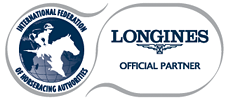Guidelines for Out of Competition Testing
INTERNATIONAL FEDERATION OF HORSERACING AUTHORITIES (IFHA) GUIDELINES FOR OUT OF COMPETITION TESTING (OOCT) IN HORSERACING
1. INTRODUCTION AND SCOPE
1.1. These guidelines provide best practice recommendations to implement a testing program that tests the right horse for the right substances at the right time.
1.2. Out of competition testing (OOCT) means any doping control which is not on a raceday, at any time during a racehorses’ career from the time of registration as a racehorse or the commencement of training until the time of final retirement from racing, as provided for in the Rules of Racing of the Racing Authority. OOCT is essential to ensure fair competition, transparency and welfare of the racehorse, in addition to sound breeding.
1.3. The primary objective of these guidelines is to assist Racing Authorities to have an OOCT anti-doping and medication control program in place that is as effective as resources permit, that maximizes detection and deterrence, and maintains the integrity and identity of the samples collected from the point of notification to the point the samples are delivered to the laboratory for analysis.
1.4. OOCT should be undertaken to obtain analytical and other evidence of compliance (or non-compliance) with the Rules of Racing. Testing is intended to detect and deter the use of substances and or methods that are prohibited at all times in the racehorse. These substances and or methods are defined in Article 6E of the IFHA International Agreement (including but not limited to anabolic steroids and blood doping agents). In addition, the OOCT visit may identify prohibited practices, welfare concerns and other rule violations. OOCT is also useful to detect and monitor the misuse of therapeutic substances and contamination issues and provides a basis from which to assist stakeholders by way of appropriate advice and education.
1.5. OOCT may be conducted anywhere, anytime, and save in exceptional and justifiable circumstances, for all OOCT testing there shall be no advance notice of the testing.
2. SAMPLE COLLECTION PERSONNEL REQUIREMENTS
2.1. The OOCT Sample Collection Team should comprise at least two persons.
2.2. At least one member of the OOCT Sample Collection Team must be expert in the collecting, processing and certification of samples, including management of the chain of custody and transportation of samples to the laboratory nominated by the Racing Authority.
2.3. Collection of samples must be performed by a registered veterinarian, trained technician or other authorised person approved by the Racing Authority.
2.4. Personnel must present, or be prepared to present, the appropriate documentation or badging that clearly identifies them as duly authorised representatives of the Racing Authority.
2.5. Blood Sample collection must be consistent with local veterinary regulatory requirements, and should be carried out by experienced professionals who have appropriate professional indemnity insurance cover in place and maintain a high standard of health and safety at all times.
2.6. The OOCT Sample Collection Team must maintain the confidentiality of all matters related to OOCT.
3. SAMPLE COLLECTION EQUIPMENT
3.1. The OOCT Sample Collection Team should ensure that sample collection equipment, as required by the Racing Authority, is available.
3.2. Sample collection equipment may comprise;
a) Traceable sample collection kits (urine, blood, hair, DNA, or other)
b) Non-traceable collection materials including urine collection receptacles, disposable gloves, spare needles, needle holders,
c) Microchip scanner or other identification documentation as required by the Racing Authority
d) Camera
e) Clipboard, writing pad, pens and other stationery as required
f) Sharps disposal container
g) Hand sanitizer and antiseptic wipes
h) Sample storage and transport equipment including cooler containers and ice packs or other means of cooling for secure storage and transportation of samples
i) Spare protective footwear and over-clothing
j) Appropriate and easily cleaned and disinfected restraint equipment
4. PLANNING EFFECTIVE OOCT
4.1. Selection of the location(s) to be visited by an OOCT Sample Collection Team
4.1.1. The Racing Authority may select a stable/yard, or any location at which a registered racehorse(s) is documented or known to be situated.
4.1.2. A location may be targeted or selected at random.
4.2. Selection of horses to be sampled
4.2.1. Individual horses may be targeted or selected at random.
4.2.2. Targeted testing may be based on; intelligence; analysis of racing performances; duration since last testing performed; or any other factors that may be considered relevant by the Racing Authority.
4.3. Selection of the analytical matrix to be collected
Based on the risk assessment the Racing Authority must determine to what extent each type of matrix should be used in order to detect and deter doping practices. The analytical matrices available include blood, urine and hair. The matrix selected will usually include at least one of blood or urine, depending on the analysis being conducted and practicability. The OOCT organiser should specify the sample matrices to be collected.
5. NOTIFICATION OF THE RESPONSIBLE PERSON (OR THEIR REPRESENTATIVE)
5.1. Except in exceptional and justifiable circumstances, no notice of a visit by an OOCT Sample Collection Team should be provided to the person(s) responsible for the selected stable/yard or facility. Whenever possible and consistent with maintaining confidentiality and effectiveness, stable visits should be conducted at times that are convenient with respect to the normal stable routine, but there should be scope to test outside normal stable hours for detection of doping drugs with short detection windows.
5.2. Racing Authorities should have in place effective and proportionate procedures to address non-cooperation, for example refusal of entry onto a stable yard, preferably in real time.
6. CONDUCTING THE OOCT VISIT
6.1. Sample collection should be performed according the standard operating procedures of the Racing Authority however, general guidelines that should be considered include;
a) On arrival at the stable/yard or facility, the OOCT Sample Collection Team should identify themselves; advise the Owner or Trainer, or their Nominated Representative, either directly, or by telephone if necessary, of the purpose of the visit and of the regulatory/legal authority of the Team.
b) If the Owner or Trainer is not present at the stable/yard or facility, he or she must nominate a representative, to assist the OOCT Sample Collection Team and to witness the collection, processing and certification of samples. Where possible this nomination should be confirmed by telephone SMS or e-mail.
c) The Trainer or Nominated Representative must be advised of the horse(s) selected for sampling and be given reasonable opportunity to prepare the horse for sample collection, for example by removing gear, hosing and movement to a safe collection area.
d) The area used for sample collection should be safe and appropriate for the type of sample collected. Whenever possible, the horse’s own box should be used for urine sample collection.
e) Prior to collection of any sample, the identity of the horse selected for sampling must be verified (for example from microchip number and or official documentation as required by the Racing Authority).
f) The OOCT Sample Collection Team, the Trainer or Nominated Representative and a horse handler (an employee of the Owner or Trainer) are authorised to be present within the immediate proximity of the horse to be sampled. Unauthorised personnel should not be permitted in close proximity of the horse for safety and security reasons.
g) The Trainer or Nominated Representative must be provided with the opportunity to observe the collection, processing and certification of the sample, in accordance with the Racing Authority’s procedures.
h) The Trainer or Nominated Representative must sign the sample identification documentation confirming that they are satisfied that the identity of the horse is correct and that the collection, processing and certification procedure has been performed in accordance with the Racing Authority’s procedures.
i) The Trainer or Nominated Representative should, in accordance with the Racing Authority’s procedures, be provided with a record of the sample collection, which should include the name of the horse sampled, date and time of sampling and the sample identification number.
7. SECURITY / POST-TEST ADMINISTRATION & STORAGE / TRANSPORTATION OF SAMPLES
7.1. Samples must be stored in a manner that protects their identity, security and physical and analytical integrity, prior to and during transportation to the laboratory. This may include for example, use of secure cooler transport containers to minimise degradation resulting from possible time delays and extreme temperature variation
7.2. Chain of custody procedures and documentation as required by the Racing Authority must be adhered to.
8. TREATMENT/MEDICATION RECORDS AND SAMPLING OF HORSES UNDERGOING TREATMENT
8.1. The treatment / medication records of sampled horses for the period selected by the Racing Authority should be recorded by photograph or photocopying.
8.2. The information that should be provided in the horse’s treatment records includes:
a) The identity of the horse
b) The trade name and/or active ingredient(s) of the medication
c) The route of administration
d) The time of administration
e) The dosage administered
f) The name of the veterinarian prescribing the treatment
g) The person responsible for administering the treatment
h) The person responsible for authorising the treatment
9. BIOSECURITY
9.1. The movement of an OOCT Sampling Team between individual racing stables/yards constitutes a potential biosecurity risk.
9.2. OOCT Sampling Teams must be trained in basic biosecurity principles and procedures and should be suitably equipped to manage any potential biosecurity risk as required by local government veterinary authorities, veterinary associations and the Racing Authority.
10. ANALYSIS OF SAMPLES
10.1.Samples must be analysed to detect prohibited substances and prohibited methods identified in Article 6E of the IFHA International Agreement and any other substances of interest to an individual racing authority.
10.2.Samples may be collected and stored for retrospective regulatory analysis or research purposes.
11. REVIEWING RESULTS
11.1.A systematic approach to documenting and analysing the results of OOCT should be used by the Racing Authority.
11.2.The detection of a substance that has no place in the legitimate medication of racehorses in training must initiate an investigation and the appropriate judicial processes of the Racing Authority.
11.3.The detection of therapeutic substances generally would not initiate an inquiry unless there is evidence of abuse of the substance, for example the use of medication within a 'Stand-Down’ or 'Restriction Period’ prior to racing.
11.4.The detection, or non-detection, of therapeutic substances in OOCT samples may be verified against the horse(s)’s treatment / medication records to ensure compliance with the treatment recording procedures required by the Racing Authority.
11.5.The Racing Authority may provide advice and counselling to Trainers based on the results of therapeutic substance detections.
12. COORDINATING WITH OTHER RACING AUTHORITIES / OOCT PERFORMED ON BEHALF OF ANOTHER RACING AUTHORITY
12.1. A Racing Authority may contract another Racing Authority to collect samples on their behalf. In the event that a Racing Authority is requested to perform OOCT on the behalf of another Racing Authority, the procedure to be used should be determined by discussion between the Authorities.
13. DISCLAIMER
13.1.The procedures and advice provided in this document are intended as guidelines for best practice. Racing Authorities are not obliged to follow the advice and no proceedings of, or any penalty that may be imposed by a Racing Authority shall be overturned, varied or held invalid by reason of any defect, irregularity, omission or departure from the recommendations contained in these guidelines.



